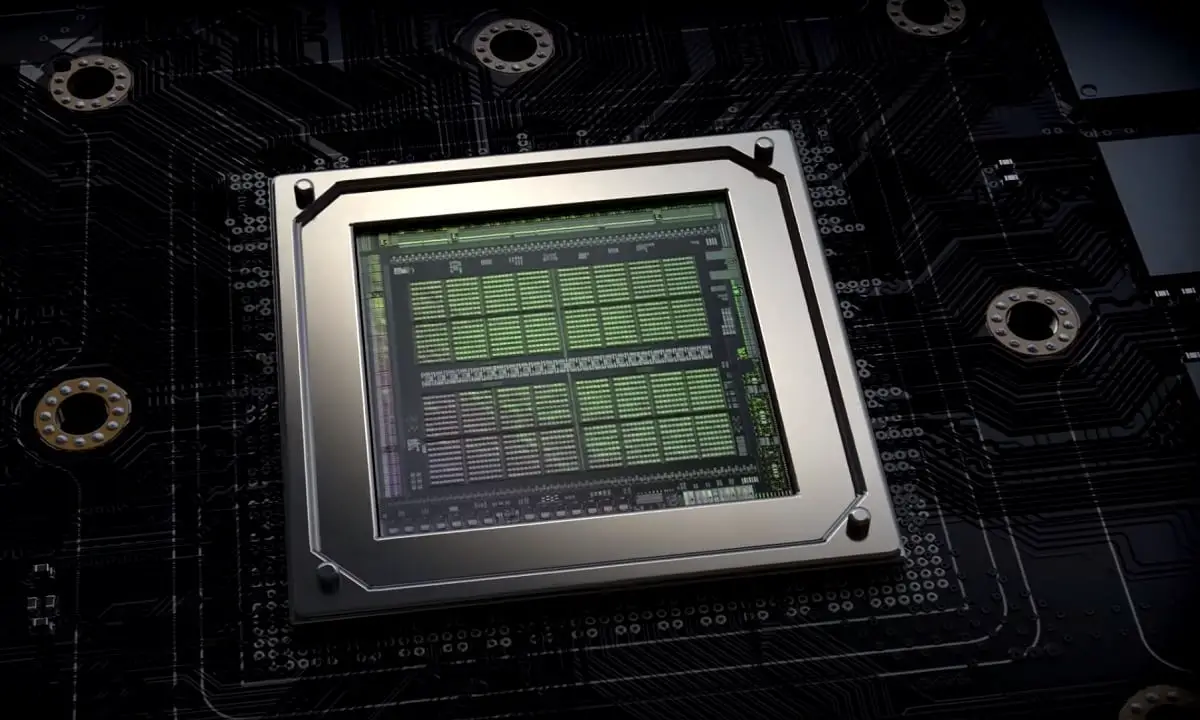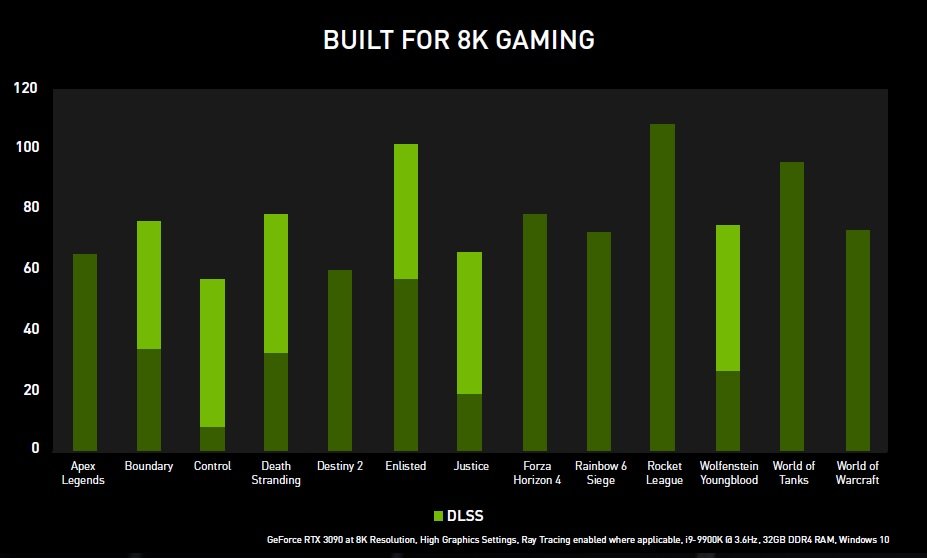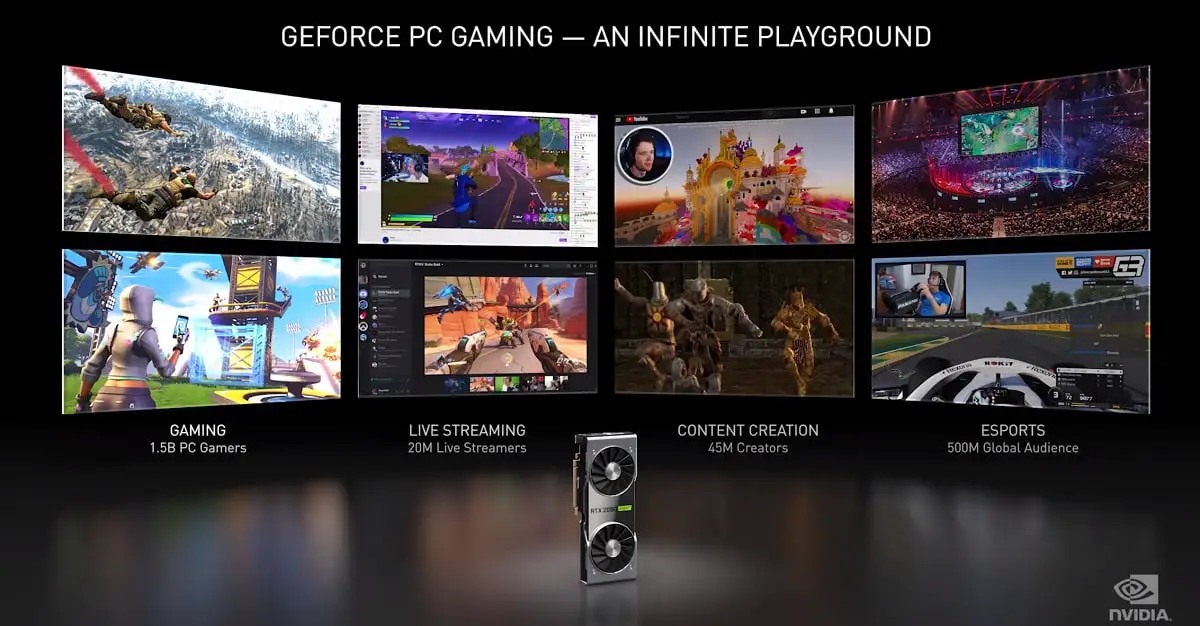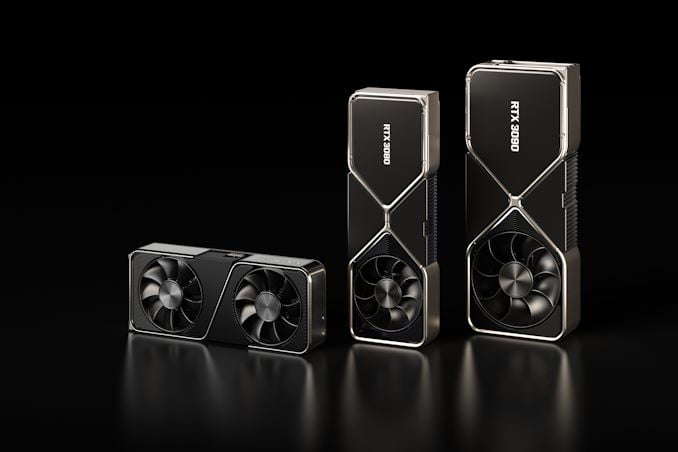The NVIDIA Ampere architecture, the basis of the GeForce RTX 30, represents a very important leap compared to the Turing architecture, which as we know has been used in the GeForce RTX 20.
During the presentation event we had the opportunity to confirm that the expectations that had been generated based on numerous rumors and alleged leaks were not at all exaggerated, and that the price-performance value of the GeForce RTX 30 was going to be much higher compared to the one offered, at the time, by the GeForce RTX 20 series.
The generational leap represented by the GeForce RTX 30 is very large, and it is defined not only by the increase in terms of raw power that NVIDIA has achieved, but also by the improvements that it has introduced both at the level of ray tracing and artificial intelligence, and for the new technologies it has presented, în which it promises to mark a turning point and enhance our gaming experience.
Everything you need to know about GeForce RTX 30 series
Behind the GeForce RTX 30 there are many important things that we must be clear about to really understand how they make a difference, what value they offer and to what extent they represent a leap forward compared to the GeForce RTX 20. Therefore, we wanted to make this special article, where you will find a summary with the ten most important keys that define the new GeForce RTX 30 graphics cards from NVIDIA.
GeForce RTX 30 has double shader engines

Until the moment of the presentation, all the specialized press was convinced that the RTX 3090 would have 5,248 shaders, and that the RTX 3080 and RTX 3070 would have 4,352 and 2,944 shaders, respectively.
The surprise was great when we saw that NVIDIA had doubled the number of shaders in the new GeForce RTX 30, which has left us with a configuration of 10,496 shaders in the RTX 3090, 8,704 shaders in the RTX 3080 and 5,888 shaders in the RTX 3070.
I know what you’re thinking, how has NVIDIA doubled the number of shaders? Well, very simple, with a change in the SM blocks (streaming multiprocessors), the equivalent to the CU (computing units) of AMD. Until now, each SM had 64 shaders, but with Ampere NVIDIA has made the leap to a configuration of 128 shaders. This means that the same number of SM units are kept, as well as the number of texturing and raster units, but the number of shaders is doubled. The number of RT cores and tensor cores also do not increase.
If you are surprised by this change, don’t worry, we did not expect it, although it is not the first time that NVIDIA has played with the shaders integrated in each SM. Kepler, the architecture used in the GTX 600 and GTX 700, had 192 shaders for each SM unit. Maxwell, the architecture used in the GTX 750-750 Ti and GTX 900, lowered the count to 128 shaders, a figure that remained in Pascal and that Turing reduced to 64 shaders per SM.
GeForce RTX 30 series has taken a very large generational leap

When NVIDIA launched the GTX 600 series there was a very important evolution. The “hot shaders” were abandoned, and the company multiplied by three the number of shaders to compensate for the drop in working frequencies of those. The result was impressive, the GTX 580 had 512 shaders, and the GTX 680 reached 1,536 shaders.
There was a very big jump in terms of performance, and this was repeated when going from the GTX 700 to the GTX 9000. For example, a GTX 970, which was high-end “economy”, performed almost the same as a GTX 780 Ti, it was the top of the range immediately before that generation. The GTX 1070 did the same with the GTX 980 Ti, and confirmed a very big leap in terms of performance that, unfortunately, it was not repeated with Turing.
The 20 series RTXs did not offer a good value in evolutionary terms if we limited ourselves to raw power. NVIDIA was aware of this, and that’s why it wanted to get users’ attention with hardware-accelerated ray tracing and DLSS. In the end, I must say that this latest technology has been the most interesting thing that Turing has left us, and I hope that it will continue to be properly used in an increasing number of games.
With the GeForce RTX 30 there has been a jump similar to the one we experienced when going from the GTX 900 to the GTX 10, since:
- The RTX 3070 outperforms the RTX 2080 Ti, and is 60% more powerful than the RTX 2070.
- The RTX 3080 doubles the RTX 2080, and outperforms the RTX 2080 Ti by up to 35% (on average).
- The RTX 3090 performs up to 50% more than the TITAN RTX.
It has faster memory to achieve greater bandwidth

The GeForce RTX 30s come equipped with GDDR6X memory in the RTX 3090 and RTX 3080 series running at 19.5GHz and 19GHz. This, coupled with an increase in data buses, which go up from 320 bits and 256 bits to 384 bits and 320 bits, respectively, translates into greater bandwidth.
The only one that has not done well in this regard is the RTX 3070, which maintains the 256-bit bus and GDDR6 memory at 14GHz. However, its performance has improved significantly, so much so that it can (theoretically) beat the RTX 2080 Ti.
In addition to increasing the speed of the memory and the data bus, NVIDIA has decided to mount a greater amount of graphics memory in the RTX 3090 and RTX 3080. The first has 24GB GDDR6X, a figure that, until now, was reserved for the TITAN series, and which represents a significant jump compared to the 11GB RTX 2080 Ti.
For its part, the RTX 3080 goes up to 10GB GDDR6X memory (the RTX 2080 has 8GB). The RTX 3070 maintains the 8GB GDDR6 at 14GHz, which leaves us an identical configuration to that of the RTX 2070.
The new cooling system
The NVIDIA Ampere architecture has made it possible to create more powerful GPUs, but this also brings more temperature. Just look at the TDP that the RTX 3090 has and compare it with that of the RTX 2080 Ti to realize it, 350 watts versus 250 watts, and the same goes for the RTX 3080, which has a TDP of 320 watts.
According to NVIDIA heat is not a problem, NVIDIA has completely redesigned the PCB of the Founders Edition models, and has used a cooling system that starts from an irregular PCB and mounts a huge radiator with two fans on opposite faces. This improves the intake of cold air and the output of hot air, as we see in the image.
According to NVIDIA, this cooling system has allowed working temperatures to be reduced by up to 20 degrees, always comparing with the values obtained with the cooling systems of the RTX 20 Founders Edition.
It will be interesting to see how the RTX 3090 and RTX 3080 behave with the custom designs of each manufacturer, but it is clear that they will have to take maximum care of them to avoid temperature problems in both models. The RTX 3080 is another story, as it has a lower TDP and is perfectly defended with a more modest cooling system.
The GeForce RTX 30 series use second generation RT cores

We have already said that the GeForce RTX 30 does not double the number of RT cores, but this does not mean that improvements have not been introduced, rather the opposite, since NVIDIA made it clear that its new architecture has raised the bar in what ray tracing refers to.
The GeForce RTX 30 use second generation RT cores, capable of offering 70% more performance than the first generation RT cores present in Turing. This already tells us that we are facing a very big jump, and that we will finally be able to play in 4K resolution with active ray tracing while maintaining a stable 60 FPS.
It is important to remember that we are still facing a hybrid rendering architecture, that is, NVIDIA Ampere maintains the division into shaders, tensor cores and RT cores that we saw in Turing, which means that it takes the same approach to hybrid rendering through rasterization. AI for intelligent rescaling and ray tracing limited to specific aspects.
However, we are going to experience an important evolution in this regard. Ray tracing will no longer be limited to a specific graphic aspect, that is, developers will no longer have to choose between applying ray tracing to shadows, ambient occlusion, lighting or reflections, they will be able to apply it to all those fronts.
Tensor cores reached third generation

The number of tensor cores present in the GeForce RTX 30 has not increased compared to the GeForce RTX 20, but NVIDIA has introduced, as in the case of the RT cores, important improvements that allow us to achieve a huge performance improvement, so much that we went from 89 tensioner TFLOPs to 238 tensioner TFLOPs.
This leap is important because it opens up new horizons for the use of new algorithms to enhance the benefits of artificial intelligence in the world of video games, and obviously also raises the value of the GeForce RTX 30 as graphics solutions capable of meeting the needs of any user reconciling work and leisure.
In case anyone has doubts about my last statement, let me explain. The GeForce RTX 30 will be supported by the NVIDIA Studio Drivers, which means that we will be able to use their tensor cores and RT cores in numerous professional applications and tools to achieve better performance. In other words, its potential is not limited to games.
- MSI Stealth 15M: MSI’s new gaming laptop
- NVIDIA released GeForce RTX 3070, 3080 and 3090 with breakthrough changes
- Acer Swift 3 and 5 are renewed with Tiger Lake processors
It will be interesting to see how artificial intelligence applied to improve performance in games evolves, and especially what differences NVIDIA manages to mark with DLSS 3.0 technology. At the moment we already know that DLSS 2.1 will allow intelligent rescaling in games under virtual reality, a very important advance since in these environments it is necessary to render the image on two screens.
GeForce RTX 3090: the first graphics card capable of 8K gaming

NVIDIA is very proud of the GeForce RTX 30, but especially the RTX 3090, a top-of-the-range graphics card that, as we know, is the successor to the RTX 2080 Ti.
By changing the nomenclature and recovering the “xx90” numbering, NVIDIA has left an ace up its sleeve, since it can take the opportunity to launch, if necessary, an RTX 3090 Super or an RTX 3090 Ti. Everything will depend on what AMD presents over the next few months. If the Sunnyvale company releases a top-of-the-range RDNA 2-based graphics card capable of standing up to the RTX 3090, I’m sure NVIDIA won’t hesitate to release a revision of that.
The RTX 3090 is a true monster with 10,496 shaders that is capable of moving, according to NVIDIA, games in 8K resolution, although using DLSS intelligent rescaling. I know what you are thinking, that there is a trick, and yes, it is true, but the result that this technology achieves has been able to surpass the classic native rendering system with TAA filtering, so it is still good news.
At the time we were able to confirm that a TITAN RTX was capable of moving Death Stranding in 8K with DLSS 2.0 while maintaining a more than acceptable performance. Given that the RTX 3090 is up to 50% more powerful than the TITAN RTX, we can make it clear that it should be able to move said game in 8K under DLSS 2.0 while maintaining a stable 60 FPS, at least in theory.
Added value through AI

Artificial intelligence applied to video games has left us with DLSS 2.0 technology, a true marvel that is capable of rendering an image using 50% fewer pixels and creating, by combining several images, a new image with a quality that has nothing to do with it. envy its native equivalent, that is, its equivalent with twice the number of pixels.
With the presentation of the GeForce RTX 30, NVIDIA has wanted to raise the bar and has presented new advances that allow to take advantage of the potential of artificial intelligence, and of the tensor cores present in these graphics cards.
Among the most important novelties we can highlight NVIDIA Broadcast, which allows us to turn our room into a professional studio, thanks to a series of functions that represent an important added value for any streamer, such as noise cancellation powered by artificial intelligence, creation of virtual backgrounds and camera autofocus.
In principle, all these novelties will also be compatible with the RTX 20 series, since they rely on the tensor cores, and these graphics cards include this type of hardware.
GeForce RTX 30 series is competitively priced

Let’s see it in a direct and clear way:
- RTX 3070: It will cost $499 and outperforms the RTX 2080 Ti, which costs $1200
- RTX 3080: It will cost $699, and it yields like two RTX 2080. Each RTX 2080 cost $849.
- RTX 3090: it will cost $1499 and it yields 50% more than the TITAN RTX, which costs $2499.
The numbers don’t lie. GeForce RTX 30 are not cheap. But it offers a very high performance value.
RTX IO technology can mark a turning point

It is, as we told you at the time, a technology that allows the use of the GPU to accelerate the workload derived from the decompression of data from the SSD. This greatly reduces CPU utilization for these tasks.
Several sources claim that the CPU level is so high that up to two full cores are needed to obtain good performance in decompression tasks. Thanks to NVIDIA’s RTX IO technology, this problem will be a problem of the past, as the GPU would take care of everything.
This technology starts from a similar base to the one we have seen in Xbox Series X, and yes, it has the support of Microsoft, in fact it works with the Direct Storage API, present in DirectX 12. Well applied, this technology would allow to minimize load times and resource consumption at the CPU level.





